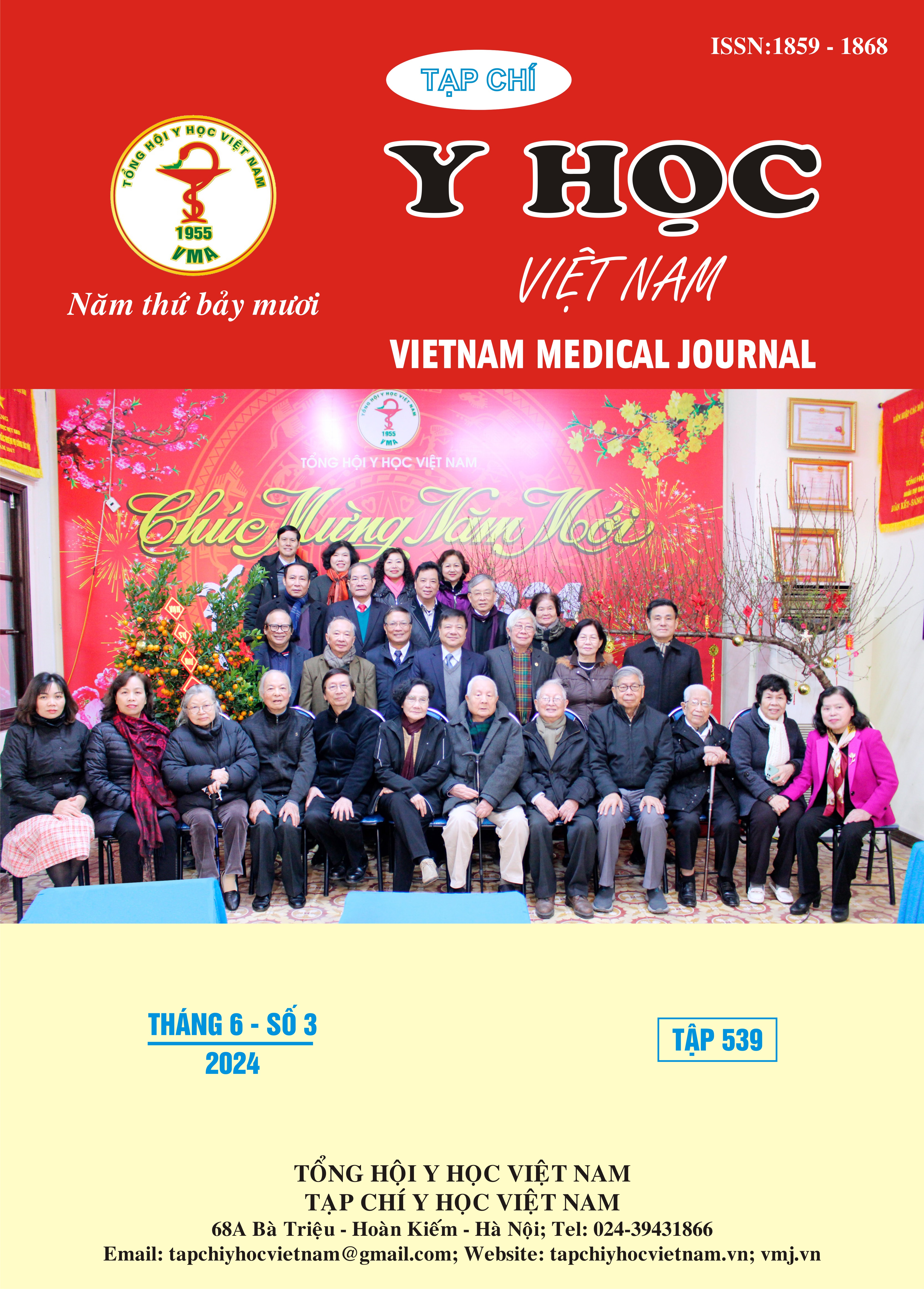CLINICAL CHARACTERISTICS, MICROBIOLOGICAL DIAGNOSIS AND CLINICAL OUTCOMES OF POST-TRAUMATIC INFECTIOUS KERATITIS
Main Article Content
Abstract
Background: Infectious keratitis is one of the leading causes of blindness/ severe vision impairment. That is triggered by an imbalance between ocular surface defense system and microbial overgrowth, in which trauma is the most common risk factor. Due to the disparity between geographical location and socio-economic status, pathologic microorganisms would develop differently. Besides, people’ limited awareness about the severity of disease would partly induce to complications. Thus, prompt diagnosis and right treatment at the beginning is obviously critical related to the efficiency of treatment. As time goes on, clinical and microbiological characteristics may change along with the development of the socio-economic status and pathologic microorganisms. We conduct this research to update the current issues and contribute to prompt diagnosis, improved clinical outcomes. Purpose: To investigate the clinical and microbiological characteristics and correlation between these factors with clinical outcomes of post-traumatic infectious keratitis. Method: An observational prospective study was performed on patients diagnosed with post-traumatic infectious keratitis from May 2023 to November 2023 at the corneal department of Ho Chi Minh city Eye Hospital. A data collection form was used to document patient demographics, risk factors, microbiological diagnosis, pretreatment and posttreatment ocular characteristics. Any contact lens-induced keratitis was excluded from the study. Results: IK was diagnosed in 60 eyes, the mean age was 47 ± 11,1y. significantly more were male (71,7%) than female. The majority of patients (67%) had sustained domestic injury, in which dust is the most common factor (36,7%). The median time between onset of symptoms and presentation to the hospital was 10d. Smear-positive corneal scrapings were 62,7%, culture-positive results were 37,5%. Monomicrobial fungus was the most common (45%), followed by polymicrobial (16,7%). Methicillin – resistant coagulase negative Staphylococci was predominant isolates (86,6%). 98,3% patients had visual acuity less than 3/10 at presentation. 58% patients required surgery, in which 46,7% cases got complications: impending/corneal perforation, persistent corneal epithelial defects. Gluing and wearing contact lens is the most selected method (65,7%). Visual acuity at 6 months was significantly improved than that at presentation (p < 0,05). Conclusion: Post-traumatic keratitis is mainly secondary from domestic injury, dust, blindness is predominant. Fungus is the most common pathologic microorganism.
Article Details
Keywords
infectious keratitis, bacterial keratitis, fungal keratitis, clinical outcomes
References
2. Chidambaram, J. D., Venkatesh Prajna, N., Srikanthi, P., Lanjewar, S., Shah, M., Elakkiya, S., Lalitha, P., & Burton, M. J., "Epidemiology, risk factors, and clinical outcomes in severe microbial keratitis in South India," Ophthalmic epidemiology , vol. 25, no. 4, pp. 297-305, 2018.
3. Puri, L. R., Burn, H., Roshan, A., Biswakarma, R., & Burton, M., "Epidemiology and clinical outcomes of microbial keratitis in South East Nepal: a mixed-methods study," BMJ open ophthalmology, vol. 7, no. 1, 2022.
4. T. N. Huy, “Khảo sát tác nhân viêm loét giác mạc nhiễm trùng tại bệnh viện Mắt thành phố Hồ Chí Minh,” Luận văn Bác sĩ nội trú, Đại học Y Dược thành phố Hồ Chí Minh, 2020.
5. Chang, Y. S., Tai, M. C., Ho, C. H., Chu, C. C., Wang, J. J., Tseng, S. H., & Jan, R. L., "Risk of Corneal Ulcer in Patients with Diabetes Mellitus: A Retrospective Large-Scale Cohort Study," Scientific reports, vol. 10, no. 1, p. 7388, 2020.
6. Dong, P. N., Hang, D. T. T., Duong, N. T. N., Lien, M. T., Chen, A. C., & Aldave, A. J., "Infectious keratitis in Vietnam: etiology, organisms, and management at Vietnam National Eye Hospital," International journal of ophthalmology, vol. 15, no. 1, pp. 128-134, 2022.
7. Khor, W. B., Prajna, V. N., Garg, P., et al. & ACSIKS Group, "The Asia Cornea Society Infectious Keratitis Study: A Prospective Multicenter Study of Infectious Keratitis in Asia," American journal of ophthalmology, vol. 195, pp. 161-170, 2018.
8. Taneja, M., Ashar, J. N., Mathur, A., Nalamada, S., & Garg, P., "Microbial keratitis following vegetative matter injury," International ophthalmology, vol. 33, no. 2, p. 117–123, 2013.
9. Chen, C. A., Hsu, S. L., Hsiao, C. H., Ma, D. H., Sun, C. C., Yu, H. J., Fang, P. C., & Kuo, M. T. , "Comparison of fungal and bacterial keratitis between tropical and subtropical Taiwan: a prospective cohort study," Annals of clinical microbiology and antimicrobials, vol. 19, no. 1, p. 11, 2020


